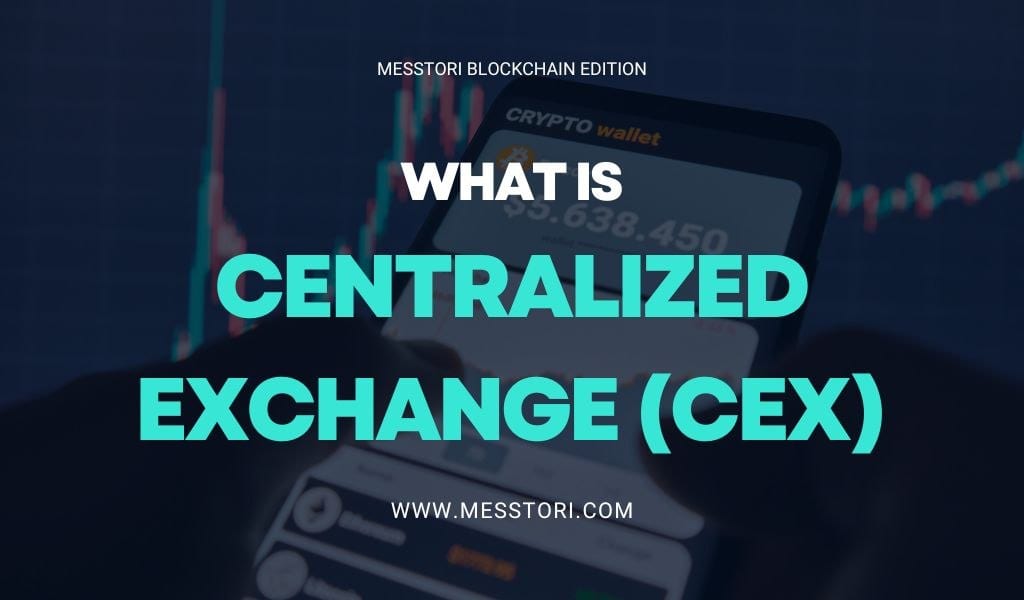In the expanding universe of digital assets, centralized exchange (CEX) continue to serve as the primary gateway for millions of users entering the world of cryptocurrency. While innovations like decentralized exchanges (DEXs) and Web3 protocols are reshaping finance, CEXs remain the backbone of the crypto economy — providing liquidity, fiat access, speed, and reliability for both retail and institutional traders.
In this guide, we dive deep into the definition of centralized exchanges, how they work, how they compare with DEXs, and why they remain indispensable in the broader crypto exchange ecosystem.

💡 What is a Centralized Exchange (CEX)?
A centralized exchange (CEX) is a digital trading platform where a central organization operates and maintains the entire trading infrastructure. Users sign up, deposit funds, and rely on the exchange to manage the custody, matching engine, and execution of their crypto trades.
Unlike decentralized exchanges (DEXs), where users retain custody of their assets and trades are executed via smart contracts, CEXs act as intermediaries — offering convenience, speed, and advanced tools, but with a trade-off in control and decentralization.
Suggest: Types of Crypto Exchanges: A Complete Guide to CEX, DEX, Hybrid, and P2P Platforms
🔑 Key characteristics of CEXs:
- Central authority manages and operates the platform
- Users must register and often complete KYC (Know Your Customer)
- High-speed trade execution using order books
- Fiat currency support for deposits and withdrawals
- Access to a wide range of tokens and trading tools
📘 New to Crypto Exchanges?
Start with the basics: Read “What is a Crypto Exchange? The Ultimate Guide for Beginners” and learn everything you need to know.
🔗 Read the Full GuideHow Does a CEX Work?
CEXs work much like traditional stock exchanges. Users place buy or sell orders for specific crypto pairs, which the exchange then matches using its order matching engine.
Here’s how a typical transaction works:
- Here’s a step-by-step look at how most centralized crypto exchanges operate:
- User Registration: Traders sign up and complete identity verification (KYC).
- Fiat Onboarding: Funds can be deposited using bank transfers, cards, or e-wallets.
- Trading Interface: Users access order books, charts, and trading pairs to buy/sell crypto.
- Order Matching Engine: The exchange matches buy and sell orders in real time.
- Custodial Wallets: Funds are held in exchange wallets, often with layered security.
- Withdrawals: Profits or assets can be withdrawn to external wallets or converted to fiat.
- This centralized model offers a streamlined user experience, especially for newcomers — making it a popular entry point to the crypto exchange world.
🆚 Centralized vs Decentralized Exchanges (CEX vs DEX)
While both CEXs and DEXs are forms of crypto exchanges, they differ in terms of custody, transparency, and control.
| Feature | Centralized Exchange (CEX) | Decentralized Exchange (DEX) |
|---|---|---|
| Custody | Exchange holds user funds | Users control their private keys |
| KYC Requirement | Usually required | Often optional or none |
| Speed | Fast and scalable order execution | Slower, depends on blockchain congestion |
| Liquidity | High | Lower, varies by protocol and pair |
| Fiat Support | Yes (cards, bank transfers) | No (crypto-only) |
| UI/UX | Beginner-friendly | More complex, especially for newcomers |
| Smart Contracts | Not needed by users | Core to operation |
CEXs and DEXs both play important roles. Many traders use CEXs for fiat access and fast trades, and DEXs for token diversity, privacy, and full control.

🚀 Why Centralized Exchanges Are Still Dominant
Despite growing interest in decentralization, CEXs remain dominant in trading volume and user base due to several critical advantages:
✅ High Liquidity: They aggregate global order flow, allowing for tight spreads and faster order execution.
✅ Fiat Gateways: CEXs are often the only bridge between traditional fiat currencies and crypto.
✅ Advanced Trading Tools: Offer features like margin, futures, API access, stop-limit orders, and bot integration.
✅ Customer Support: Users can access live chat, email, or ticket-based support — something most DEXs can’t offer.
🏆 Top Centralized Exchanges [current_year]
Choosing the right centralized exchange depends on your needs — such as regulatory location, trading volume, fees, or fiat support. Below is a comparison of some of the most trusted CEXs, along with a credibility rating (⭐ 1–5 stars) based on transparency, volume, regulation, and security.
| Exchange | Headquarters | Key Features | ⭐ Credibility |
|---|---|---|---|
| Binance | Global | Low fees, huge selection, futures, BNB token | ⭐⭐⭐⭐⭐ |
| Coinbase | USA | Fully regulated, beginner-friendly, secure | ⭐⭐⭐⭐⭐ |
| Bybit | UAE | Popular for derivatives, copy trading | ⭐⭐⭐⭐ |
| MEXC | Singapore | Early token listings, broad altcoin support | ⭐⭐⭐⭐ |
| Kraken | USA | High security, fiat integration, OTC options | ⭐⭐⭐⭐ |
Final Thoughts
A centralized exchange (CEX) is much more than a trading platform — it’s the cornerstone of crypto adoption. It lowers the entry barrier for newcomers, offers compliance for institutional investors, and drives innovation with advanced features.
While DEXs are gaining ground in terms of decentralization and control, CEXs are still vital for liquidity, user experience, and mainstream adoption.
✅ Whether you’re starting your first trade or launching your Web3 project, understanding how centralized exchanges work — and which one to choose — is essential in your crypto exchange journey.
FAQ – Centralized Exchanges (CEX)
Binance, Coinbase, and Kraken are among the most popular centralized exchanges (CEXs).
A CEX (Centralized Exchange) is a digital trading platform acting as an intermediary between crypto buyers and sellers, offering custody and high liquidity.
A centralized exchange is a trading platform where a central authority manages user accounts, fund custody, and transaction matching.
The top 3 DEXs are Uniswap (Ethereum), PancakeSwap (BNB Chain), and dYdX (Layer 2 derivatives).
CEXs centrally manage assets and trades, while DEXs enable peer-to-peer transactions without intermediaries, giving users full control over funds.
Top-tier CEXs implement strong security measures, but users should choose reputable exchanges and minimize funds kept online.
Some CEXs allow limited trading without KYC, but full access to fiat transactions and higher withdrawal limits usually requires identity verification.
CEXs typically charge maker/taker fees, withdrawal fees, and sometimes deposit fees, depending on the exchange’s policy.
Coinbase is considered beginner-friendly due to its easy-to-use interface, educational resources, and strong security standards.
Yes, many users buy crypto through CEXs for fiat support, then transfer to DEXs for decentralized trading, yield farming, and enhanced privacy.
- Subscription Marketing Strategy: Your Path to Explosive Growth
- Vietnam Aptos Hackathon Launches to Ignite Blockchain Innovation Across Southeast Asia
- Types of Crypto Exchanges: A Complete Guide to CEX, DEX, Hybrid, and P2P Platforms
- BXClusive Season 2 – Earn Points, Claim Rewards Up To $750,000
- Saudi Arabia Leads Middle East’s Fintech Future: Fintech Revolution Summit 2025








